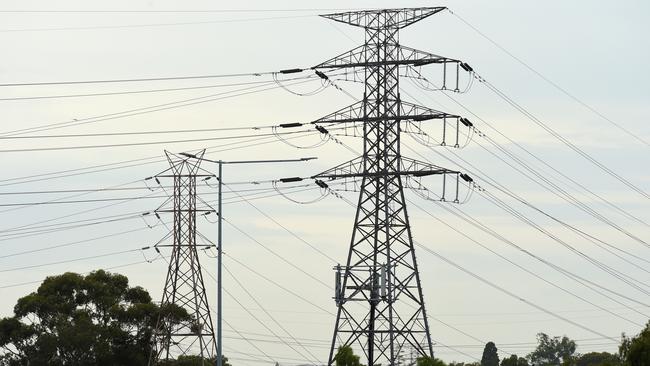Energy: the hot topic no one wants to talk about

Yet throughout this election battle debate one subject has not had nearly enough scrutiny or either Coalition or Labor policy: energy and climate. During Sunday night’s leaders’ debate, energy policy saw the biggest spat between the two and yet was a confused slagging match. Indeed Labor’s Albanese was not asked a direct question on energy policy at all.
Energy policy or lack thereof has been the downfall of many a recent prime minister and is responsible for “teal” seat ambitions. But energy plays right into the cost of living crisis, a priority issue for voters.
The question for business is how quickly a new government would be prepared to intervene to cap electricity prices.
Australians should know their power bills are going to go up, following the huge jump in electricity wholesale prices in the first quarter. For every state except South Australia, that jump is over 100 per cent compared to the first quarter of 2021. Wholesale prices make up around 30 per cent of an average bill. The jump will take some months to work its way through to bills, but forward wholesale market prices signal it will be coming.
Despite this, Labor’s election promise is for $275 in savings on home electricity bills by 2023. The modelling behind this pledge, completed in December last year, is also out of date.
In February Origin Energy announced it would bring forward the closure of Eraring, Australia’s largest coal-fired power station, to 2025.
And Mike Cannon-Brooks is pressuring AGL to close its coal-fired power stations (Bayswater and Loy Yang A, with around twice the coal capacity of Eraring) perhaps as early as 2030.
If the billionaire activist succeeds in blocking the demerger of AGL, he will become even more influential.
Labor’s modelling assumes Eraring and AGL’s power stations remain open beyond 2030. If a model assumption is wrong, the output will also be wrong. How much lower will Labor’s power price savings be as the result of the early closure of Eraring and potentially AGL’s power stations?
Like it or not, coal-fired power currently supplies 60 per cent of electricity in the National Electricity Market. If coal closes too fast and before other firming power is there to replace it (including batteries which can store energy for longer periods) then prices for firm energy will spike and average NEM prices will rise.
This scenario could force the government to intervene to cap retail prices.
That makes business nervous.
It increases the risk of investing in new energy generation.
Does Labor support these moves to phase out coal-fired generation?
The Coalition does not want to talk about energy either. Ahead of the election campaign Energy Minister Angus Taylor said the government intended to force all coal-fired power station owners to give five years’ notice of closure. Cannon-Brookes’ response was that in that case, a newly elected government might find itself with a bunch of five-year notices all arriving at once.
Senator Matt Canavan thinks he is belling the cat, saying that Net Zero is “sort of dead anyway” after Britain and Europe’s announcements to rethink the importance of fossil fuels. “It’s all over bar the shouting here,” he says.
That is not correct either. Energy transition is happening and faster than expected. But it threatens to be very bumpy for the market.
Kerry Schott’s cut-through words in July last year, when she delivered the Energy Security Board’s plan for a capacity market to smooth transition, were: “Just get on with it.”
A capacity market pays energy generators to have power available to firm up the grid, whether that be with coal, gas, hydro or future batteries. Yet some 10 months on from the ESB report, where is the progress?
When AGL announced its demerger in March last year, part of the rationale was that increasingly retail customers wanted cleaner energy. Profit margins on the generation side were also under huge pressure as wholesale prices hit rock bottom.
At the time, then chief executive Brett Redman said that the forces of customer, community and technology were accelerating faster than anticipated.
“Coupled with continuing pressure on wholesale electricity prices, if anything, that pace has only picked up in the past few weeks,” he said.
Since then though wholesale electricity prices have bounced back spectacularly. Asked if this changed the demerger rationale, current AGL chief Graeme Hunt is adamant that it does not.
The demerger scheme booklet went to shareholders on Friday. Hunt says the independent expert, Grant Samuel, backs the board’s demerger plan.
“He looked at this as we did, both qualitatively and quantitatively at existing pricing, forward curves and modelling from other independent experts. It’s not as simple as being able to run different scenarios in a spreadsheet and compare one against the other,” he says.
“You also step back to look holistically at how the issues can be best managed and what are the opportunities that arise under difference scenarios.”





On Monday Scott Morrison and Anthony Albanese pin their ears back for a final fortnight of campaigning.